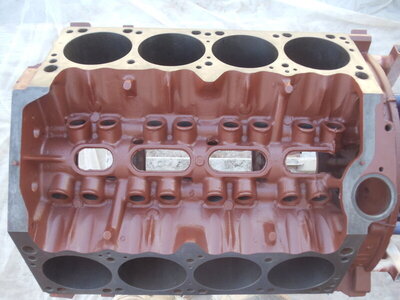EngineerDoug
Well-Known Member
Hey folks,
I would like to hear your method of doing a final block wash after all machine work has been done. My block is back from the shop, and I have heard some folks say hot soapy water followed by immediate drying and douse with WD40. But others say water is a no-no, because you can never get it dry enough fast enough to prevent rusting.
Your thoughts? Thanks.
I would like to hear your method of doing a final block wash after all machine work has been done. My block is back from the shop, and I have heard some folks say hot soapy water followed by immediate drying and douse with WD40. But others say water is a no-no, because you can never get it dry enough fast enough to prevent rusting.
Your thoughts? Thanks.

















